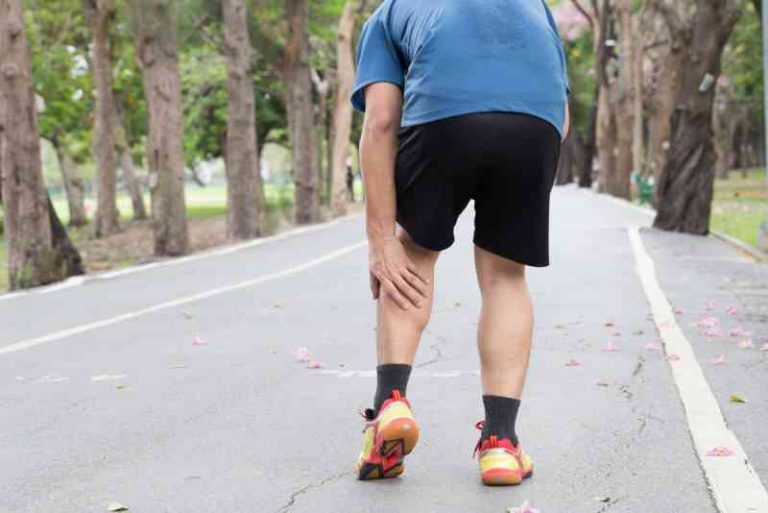It’s a bright sunny morning, you’ve had your healthy breakfast, done your stretches and now you’re ready for your run. Ten minutes into your run though you feel a slight pain in your side.
You feel pain on the bottom of your ribcage on the right side, so you stop. The pain goes away, but the moment you begin to run again the pain comes back. So you ask yourself, what is this pain and what is causing it?
Every ache and pain in our body has a name and a reason why it occurs. To find out what this pain is, continue reading.
The pain that is causing you discomfort while you’re performing physical exercise is called a Stitch. Stitches, not the medical procedure that closes up a wound, are muscle spasms of the diaphragm.

They mainly occur occasionally during strenuous exercise. Despite scientists not knowing exactly what causes a stitch, there are some educated guesses. One theory is the diaphragm (the muscle that separates the chest cavity from the abdominal cavity) isn’t receiving enough blood during its contractions.

Like a leg cramp, when there is not enough blood supply to the general area, a spasm or sharp pain will occur. According to research, about two-thirds of avid runners and walkers experience a side stitch.

In 2015, there was a review article that was published, and it noted that after the 1940’s and 50’s, there was almost a 50 year gap in research on side stitches.

Despite the lack of research, there are a few things that you can do to treat it when it occurs. Before I get into that, it’s important to know that this pain should only be temporary. If the pain does not subside, then it’s best to make an appointment with your doctor.

Stop or Slow Down: If you experience a side stitch, the first thing you should do is either stop if you can, or slow down. Then you will want to bend forward and push your fingers into the painful area. This will force your diaphragm to relax and ease the spasm while increasing blood flow.

Breathe Deeply and Exhale Slowly: The main reason why you’re experiencing this pain is because there isn’t enough blood flow and your diaphragm has become very tense. In order to allow blood to flow into that area, the diaphragm needs to be relaxed. This breathing technique will relax it.

Stretch the Abdominal Muscles: Sometimes all that you need to do is stretch the muscle that is aching. So when you feel that stitch, reach over your head and hold your arms in this exact position until the stitch goes away. Wait a few minutes after it disappears before resuming physical activity.

Now that you know how to treat your stitch, I’m sure you would prefer if you never experienced one. So below are the best ways to prevent a side stitch from ever occurring.

Don’t Eat and Run: If you find that stitches seem to occur after you’ve eaten a big meal, it might be beneficial if you wait 30 to 90 minutes after eating before you begin exercising.

Decrease Intensity and Increase Duration of Exercise: This prevention tip is even more essential if you are just starting a new workout program. Research has shown that stitches are more common for those who are untrained exercisers. It’s best to gradually increase the intensity so you can sidestep stitches.

Warm Up: The older you get, the more fragile your muscles and bones become, making warm-ups that much more important. If you are a runner, start with a 10 minute light jog to get the blood flowing and the muscles moving before you begin running.

Avoid Shallow Breathing: Shallow breathing only uses a small portion of your lung capacity. I know it can be difficult to take deep breathes when you’re running, but this doesn’t allow the diaphragm to descent far enough to allow the connected ligaments of the liver to relax.

Practice Deep Breathing Exercises: The best way to avoid a stitch is to get your breathing sorted out. For this technique, lie down on the floor and place your hand on your abdomen. Breathe in deeply; this is called “belly breathing”. If only your chest moves up when you breathe, than you’re not breathing deep enough.

Attempt Forced Exhalation: If you cannot master deep breathing, the next choice would be to force yourself to breathe deeply. While you’re running, pretend like you’re blowing out candles. To do this purse your lips while you exhale, this will cause you to breathe deeply.

Do Not Drink Beverages High In Carbs: You might think that drinking an energy drink or a drink high in sugar while you run is a good thing, but chances are it is making you dehydrated. The best thing to do is drink water while you run. Your stomach may not react well to the high carbohydrate intake.

And don’t forget to Liked Video this story with your friends on Facebook.






